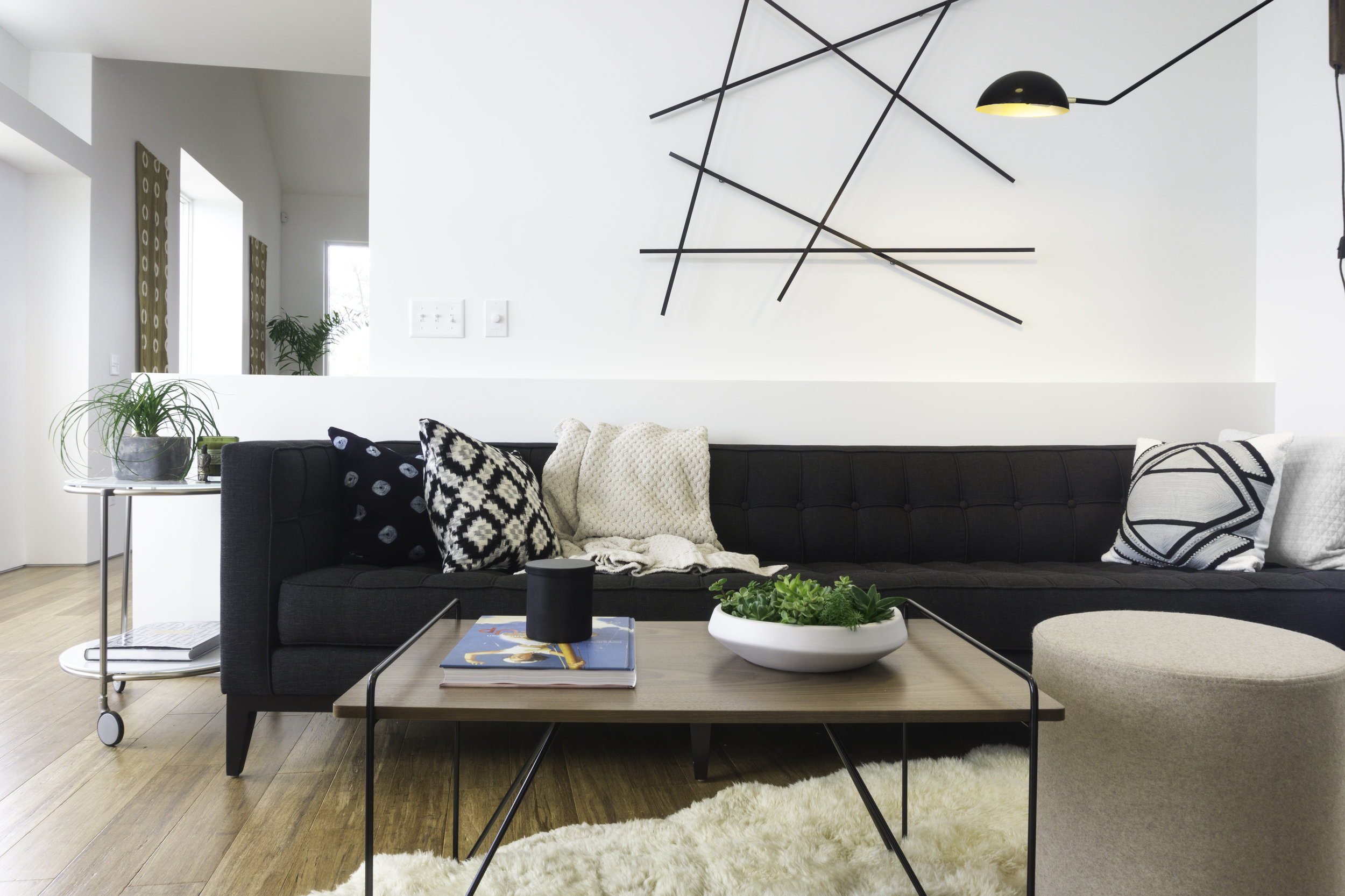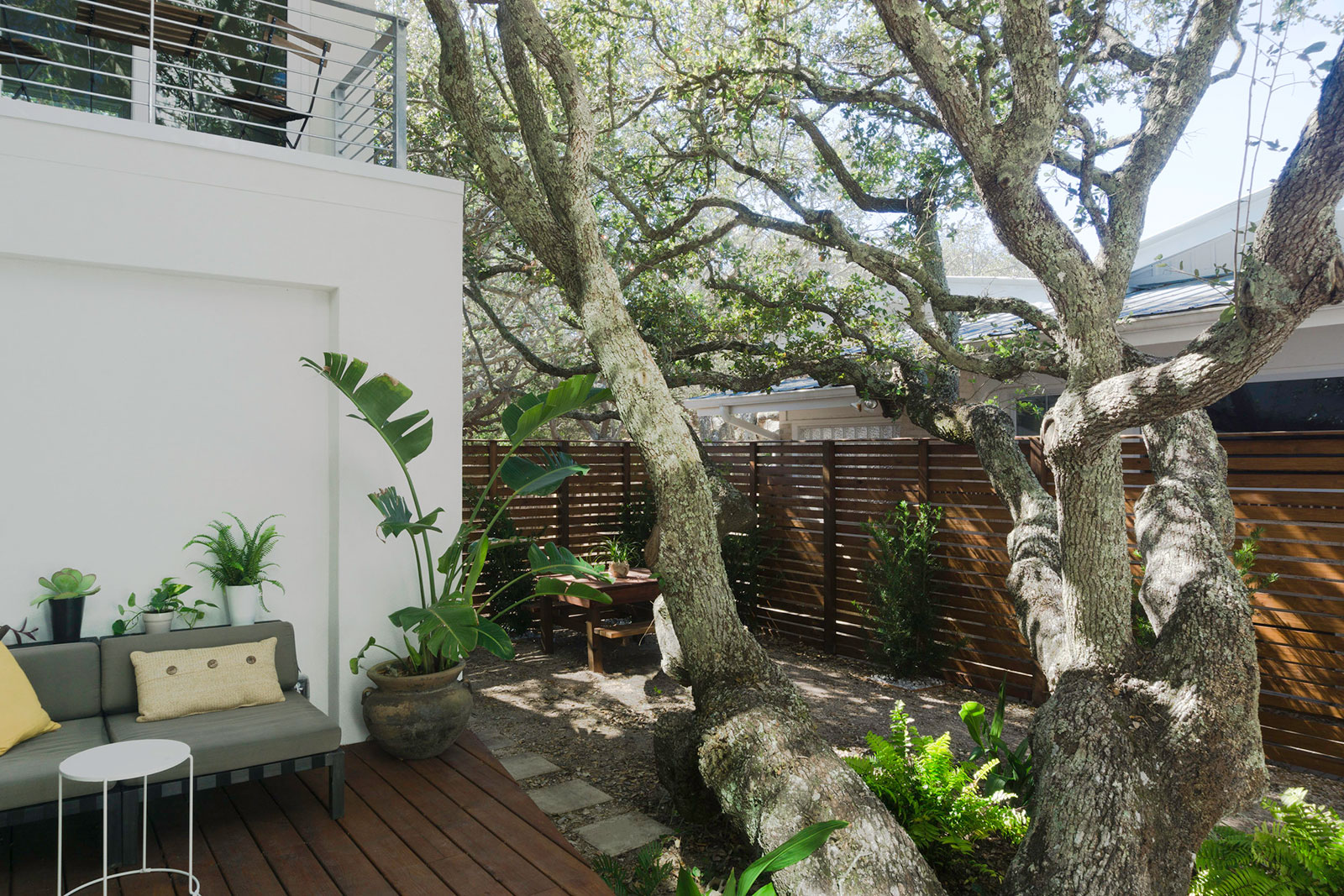Your home is meant to be a nurturing and safe refuge to cook meals with family and friends, relax on the sofa to watch a movie, or snuggle into bed to recharge and dream. But you may be surprised to learn that your home is likely full of unseen toxins in your sofa, mattress and cabinetry that can increase your cancer risk over time.
“The most shocking thing was how many chemicals are in everything,” says Alaina Penn, a commercial interior designer in Atlanta. She took a sustainability class while she was studying design. “Any material with toxins, such as in paint or the upholstery you’re sitting on […] that can impact your body internally.” The skin is the largest organ, and it’s permeable, absorbing toxins. And as toxins are off-gassed into the air, we breathe them in. Penn earned a healthy home design certification from Wellness Within Your Walls, an interior environment advocacy and education organization in Atlanta.
Penn is also part of a growing number of designers, builders and architects dedicated to helping clients create homes that are free of toxic volatile organic compounds (VOCs) like formaldehyde, radon and benzene. Making safer choices goes a long way in keeping you healthy, whether you’re dealing with chemical sensitivities or recovering from cancer.
Clean Air + Water
“We’re all about the air and water, that’s where it starts,” says Jan Flanzer, president and co-founder Healthy Home Builders (HHB) in Scarsdale, New York. And that makes sense because air and water are essential for life.
After exposure to toxic mold, Flanzer decided to root out toxins throughout her home. Now, her team specializes in non-toxic new construction and remodeling projects. They use building materials free of VOCs, such as untreated solid maple or poplar cabinetry and recycled denim as insulation instead of chemical foam that’s made from petroleum. Fumes are linked to causing headaches and respiratory problems, plus petrochemicals can accumulate in the body over time, disrupting the endocrine system and hormone production.
Every project starts with a ventilation system that brings fresh air inside and sends stale air outside. The fresh air is filtered and purified, and the homeowner can set controls to determine the temperature and how fast the air enters the house. Because tap water across the U.S. can be contaminated with lead, mercury and pesticides, every HHB home gets a whole-house water filtration system installed at the water source, plus smaller carbon filters in the kitchen or bathroom. “If you do this properly with non-toxic materials, your house is safe,” Flanzer says.
Ninety percent of the toxicity issues inside the home will be caused by things you can see and touch.
Fighting Formaldehyde
For Andy Pace, his aha moment came 28 years ago, when a crew from his family’s construction business was finishing a parking lot with a water-based sealer. When nearby residents complained of the odor, he thought they were exaggerating. But when three workers were rushed to the hospital with breathing problems, Pace was shaken. That started his quest to find safer home construction materials and products.
“Ninety percent of the toxicity issues inside the home will be caused by things you can see and touch,” says Pace, founder of the Green Design Center, a resource for non-toxic building supplies and education based in Wisconsin. He consults on projects around the world and hosts the Non-Toxic Environments podcast.
While most people avoid asbestos and lead, Pace said many are unaware of formaldehyde, a VOC that the World Health Organization and National Toxicology Program call a known carcinogen. It’s found in flame retardants commonly added to flooring and textiles, foam inside of furniture, and adhesives in particleboard and pressed-wood furniture. As these products age, formaldehyde is released into the air and onto our skin.
“With low-level exposure over a long period of time, our body builds up these toxins, and at some point, people can’t filter it out any more, and you start getting reactions,” Pace says. He performs a test that measures the amount of formaldehyde being released by various surfaces in the home.
The most significant source of toxins he sees? Wall-to-wall carpeting. “I’ve tested carpeting that’s 28 years old that is still off-gassing toxic levels of formaldehyde,” he says. “Carpet becomes a sponge […] for what else is in the room.” Pace prefers hard flooring, natural hardwood, cork or porcelain tile laid with non-toxic grout.

Pure Paint
Painting the walls or staining your wood trim is an easy way to refresh a room. But when you smell paint or stain drying, you’re inhaling VOCs added to help the products apply smoothly or dry faster. The worst offenders include benzene, a known carcinogen, and methylene chloride, a solvent found in paint thinner that the EPA says likely causes cancer in humans. Other chemicals commonly found in paint are xylene, toluene and acetone, which can cause eye and lung irritation and headaches.
Mandy Cheng, an interior designer based in Los Angeles, says it’s easy today to find low-toxin paints. That’s what she used when she designed The Live Oak House, a LEED Platinum home in St. Augustine, Florida. “Make sure when you’re buying paint, you get zero-VOC paint,” Cheng says.
Do your research and read the label to make sure your paints and stains meet strict Green Seal guidelines for low- or no-VOC labels. The non-profit organization sets environmental standards that limit a low VOC paint to 50 grams per liter, while zero-VOC paint to 5 grams of VOCs per liter.
Safer Home Choices
Our experts shared these low and zero-toxin products and resources for everything from paint to furniture to bedding.
Paint/Stains: Zero-VOC paints include Benjamin Moore Aura, AFM SafeCoat, and Miss Mustard Seed’s Milk Paint, made from milk protein and mineral pigments. Rubio Monocoat is a zero-VOC, wax-based wood stain.
Carpeting: Earth Weave carpet is wool fiber that’s free of flame retardants and pesticides down to the backing made of jute, cotton and natural tree rubber. Look for area rugs labeled non-toxic or organic – “natural” is a meaningless marketing buzzword.
Flooring: Amorim Wise is a waterproof cork flooring, while Forbo Marmoleum is a plant-based linoleum that follows a 150-year-old craft.
Furniture: Cisco Home makes sustainable furniture by hand, while Urban Natural promises toxin-free sofas, chairs and beds.
Mattress: Flanzer only works with OMI, an organic mattress maker.
Textiles: Look for organic sheets and towels from Coyuchi and Pottery Barn. Avoid anything marketed as flame- or wrinkle-resistant.
Kitchen: Choose only solid hardwood cabinetry; the cleanest woods are poplar and maple. Avoid granite counters which can release radon gas and anything made from pressed wood, plywood or medium-density fibreboard (MDF).
Bathroom: Opt for hardwood vanities, non-toxic caulking by AFM SafeCoat and powdered grout to avoid antimicrobials and nanosilver in wet preparations.







